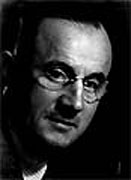
Italo Botti was born in Buenos Aires on January 6, 1889. He studies at the Academia Nacional de Bellas Artes, during the time directed Pío Collivadino where his teachers are Gustavo Bacarizas, Jorge Bermúdez and Alberto Rossi.
In 1914, still a student of the academy, he participates for the first time at the Salón Nacional. In 1916, he graduates and starts to work on motives that characterize his entire artistic production: the marine themes of the Riachuelo, the port activity, the urban sites of Buenos Aires and the Córdoba hills, especially the views of the Ongamira town, where he spends long seasons.
In 1919, he holds his first individual exhibit at the Salón Castellani in Rosario. In 1920, he shows his work at the Comisión Nacional de Bellas Artes. An art critic from La Prensa newspaper comments:
“[...] Italo Botti presents three deeply felt pictures, a cosmopolitan and picturesque vision of La Boca where the imaginary country of the fogs that Blaudelaire sings in the crystalline verses of his poem “The invitation to the trip”, sets a distant dreamy and sad atmosphere [...].”
In 1923, he is awarded the Cecilia Grierson Prize and in 1924, the Eduardo Sívori Award, both at the Salón Nacional. In 1930, he wins Second Place in this same contest and the following years, he wins the First Prize at the Premio Municipal.
During this time, a substantial change renews Botti’s paintings. A fine sensibility and the selection of grayish hues result in a more intimate and autumn like atmosphere. The art critic Pedro Massa refers to him during the retrospective exhibit at Galería Velázquez, in 1955, as follows:
“[...] It’s a great virtue in art, to resist and defeat all the temptations of the “picturesque”, the passionately colorful, and triumphal [...] there needs to be an admirable sense of sobriety, of that which is delicate and vaporous, in order to stay away from the giddiness of color and remain within the austere tone of the grays [...] Botti managed among a few artists, that firm distance from the spectacular, and this way his painting is a delicious repertoire of urban corners, hills, and ports [...]”
As an engraver, he specialized in etching and polychrome variations. He took part in collective exhibits at the Sociedad de Acuarelistas y Grabadores, the Salón de Grabado y Dibujo in Buenos Aires and the Salón de Grabado in Rosario. In 1961 he is awarded the First Prize at the Exposición Internacional de París. He is also awarded with the Gold Medal at the Salones in Rosario and Bahía Blanca and, in Santa Fe he wins the Rosa Galisteo de Rodríguez Award that he shares with Enrique de Larrañaga and Miguel Carlos Victorica.
His work can be found at the following museums: Museo Nacional de Bellas Artes, Museo Municipal “Eduardo Sívori”, Museo de Bellas Artes de La Boca “Benito Quinquela Martín”, and other institutions in Rosario and Bahía Blanca. The provincial museums in Santa Fe, Paraná, Mendoza and San Juan also house his work. One of his pieces is displayed at the Virginia Museum of Fine Arts, USA.
He dies in Buenos Aires, in February, 1974.